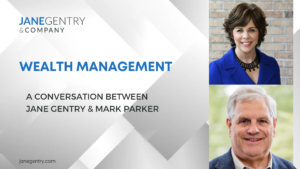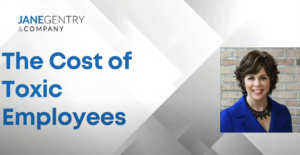4 Strategic Frameworks to empower ceos
Which strategy framework should you use?
As a CEO or leader, you are at the helm of steering your businesses through the choppy waters of competition, market changes, and internal challenges. How do you decide where to take the business or your offering?
To navigate these complexities, strategic frameworks provide a structured approach to decision-making and growth. They create a guide for thinking through your next steps and getting your team in alignment with the thought process and the strategy. While no model is perfect, here are four strategy frameworks that can empower you to chart your next steps.
Strategic framework 1:
The Balanced Scorecard
The Balanced Scorecard, introduced by Robert S. Kaplan and David P. Norton, offers a comprehensive view of an organization’s performance. It balances financial measures with performance metrics in customer satisfaction, internal processes, and learning and growth.
when to leverage the balanced scorecard framework?
The Balanced Scorecard framework aligns business activities with the company’s vision and strategy, improving internal and external communications and monitoring organizational performance against strategic goals.
It works best when there is a clearly articulated vision that has been understood and adopted at every level of the organization and when all decisions are made by assessing their value in moving the organization closer to the vision.
This approach ensures that short-term financial performance is not pursued at the expense of long-term strategic goals, leading to a more sustainable and holistic approach to growth.
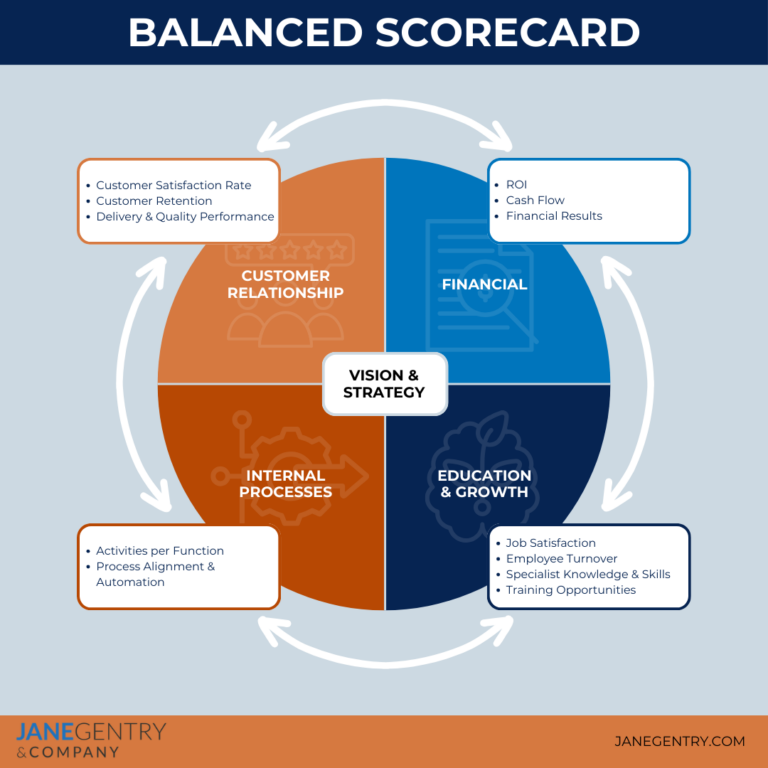
Balanced Scorecard Framework Example: Apple
Apple uses five performance indicators as part of a holistic approach to its long-term performance plan. This includes customer satisfaction, core competencies, employee commitment and alignment (through a comprehensive employee survey), market share and shareholder value.
The balanced scorecard helps senior management focus on a strategy that expands discussions beyond gross margin, return on equity, and market share. Apple also uses market share to increase profits and influence the software developers they collaborate with.
Strategic framework 2:
The Ansoff Matrix
Developed by Igor Ansoff, this strategic planning tool provides a roadmap for growth by outlining four strategies: market penetration, market development, product development, and diversification. CEOs use the Ansoff Matrix to evaluate potential growth strategies and focus on areas with the highest potential for success.
when to leverage the Ansoff Matrix framework?
This matrix identifies opportunities for expanding their customer base or developing new products – for example, exploring market development by targeting new geographical regions or customer segments. Alternatively, a company could pursue product development by innovating or improving existing offerings.
By objectively analyzing your business, working through the quadrants and analyzing the options, CEOs can make calculated risks and prioritize initiatives that align with their growth objectives.
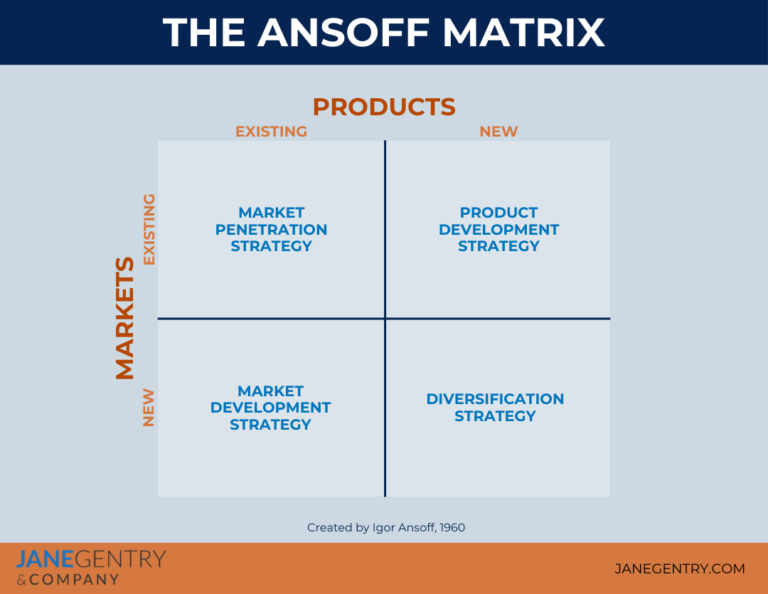
Ansoff Matrix Framework Example: Coca-Cola
Coca-Cola uses the Ansoff Matrix to identify its market growth and product development strategies. The company has identified untapped markets, tapping into them with its new products. The company is constantly diversifying its product line to keep up with the changing trends.
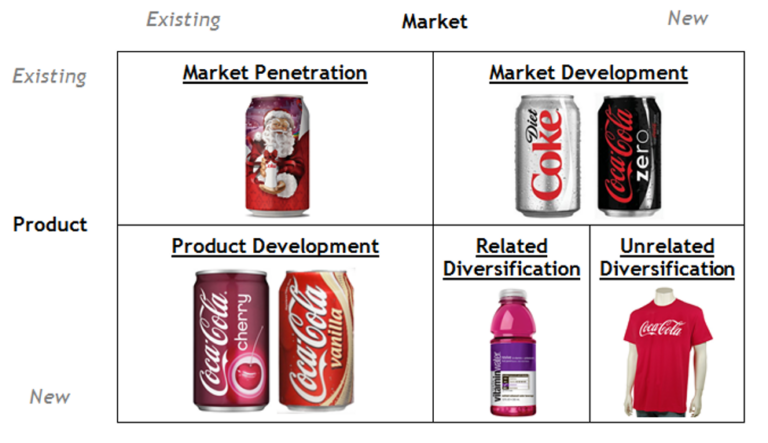
Strategic framework 3:
The GE-McKinsey Matrix
This framework assists CEOs in prioritizing investments among their business units or segments. By evaluating industry attractiveness and competitive strength, you can allocate resources effectively, invest in promising areas, and divest from underperforming segments, ensuring a balanced and strategic approach to your business.
when to leverage the GE-Mckinsey Matrix framework?
This nine-box matrix helps evaluate business units, segments, or product lines in terms of industry attractiveness and competitive strength. This tool helps to make informed decisions about where to invest resources or divest.
For example, a business segment in a high-growth industry with strong competitive positioning might warrant significant investment, while one in a mature or declining industry with weak positioning might be a candidate for divestiture or turnaround strategies.
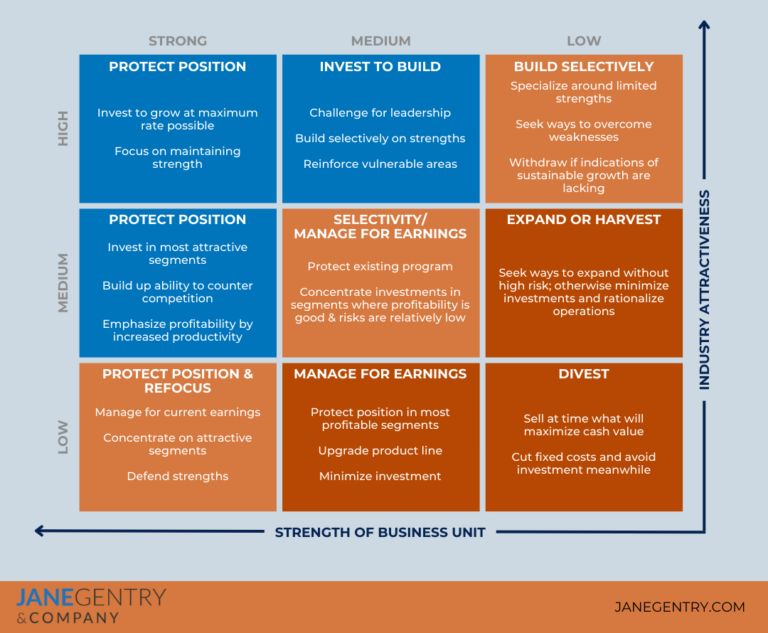
GE-Mckinsey Framework Example: Nestle
Nestle has used the GE-McKinsey Matrix to analyze its product portfolio and determine which products to invest in and which to divest. The company used the matrix to assess the market attractiveness of each product line and the strength of Nestle’s competitive position in that market.

Strategic framework 4:
The Blue Ocean Strategy
W. Chan Kim and Renée Mauborgne’s Blue Ocean Strategy encourages CEOs to break away from intense competition by creating uncontested market spaces, or ‘blue oceans.’ This framework pushes to innovate and redefine market boundaries, offering unique value propositions that drive growth and profitability. The Blue Ocean Strategy creates new market spaces where competition is irrelevant.
when to leverage the The Blue ocean strategy framework?
Apply this framework by identifying and pursuing differentiation and low cost simultaneously. You might innovate in value offerings, delivery channels, or customer experience to unlock new demand and create a ‘blue ocean’ of uncontested market space. This strategic move can lead to rapid growth and expansion as the company taps into new customer bases and markets.
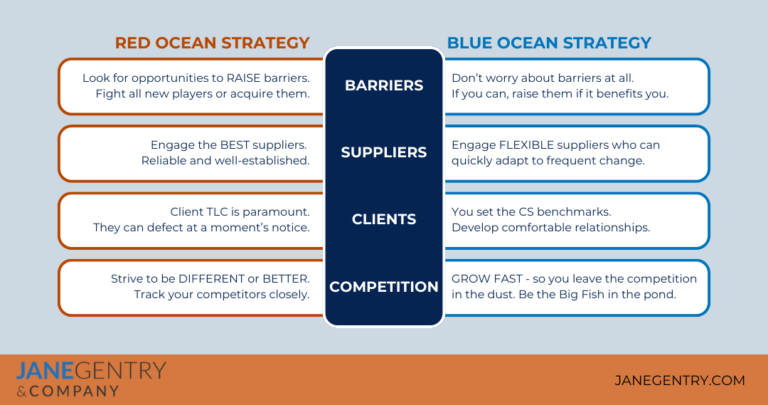
Blue Ocean Strategy Framework Example: Cirque Du Soleil
Cirque du Soleil is one of the most well-known cases of the blue ocean strategy. Cirque du Soleil revolutionized the circus industry by aiming at low cost and differentiation. Concentrating on human physical prowess, live music, and a theatrically inspired plot allowed Cirque du Soleil to produce new elements that had never been seen in the circus world.
the power of leveraging strategic frameworks
Understanding the right next steps for your business can be a daunting challenge. And, as you bring your leadership team together to brainstorm or evaluate opportunities and challenges, without an effective way to structure the conversation, you’ll likely end up with anemic ideas.
As you consider the next steps in your business during a tumultuous time, as your market changes, or when you are enjoying success and looking for your next win, these frameworks provide you with powerful tools to make strategic decisions and pursue growth opportunities.
By adopting and adapting these strategic frameworks to their unique contexts, you can develop a clear vision, foster organizational alignment, and drive sustainable business growth.
Download Article Highlights
Looking for the short and sweet version? Download our article recap slides covering the main points and highlights.

